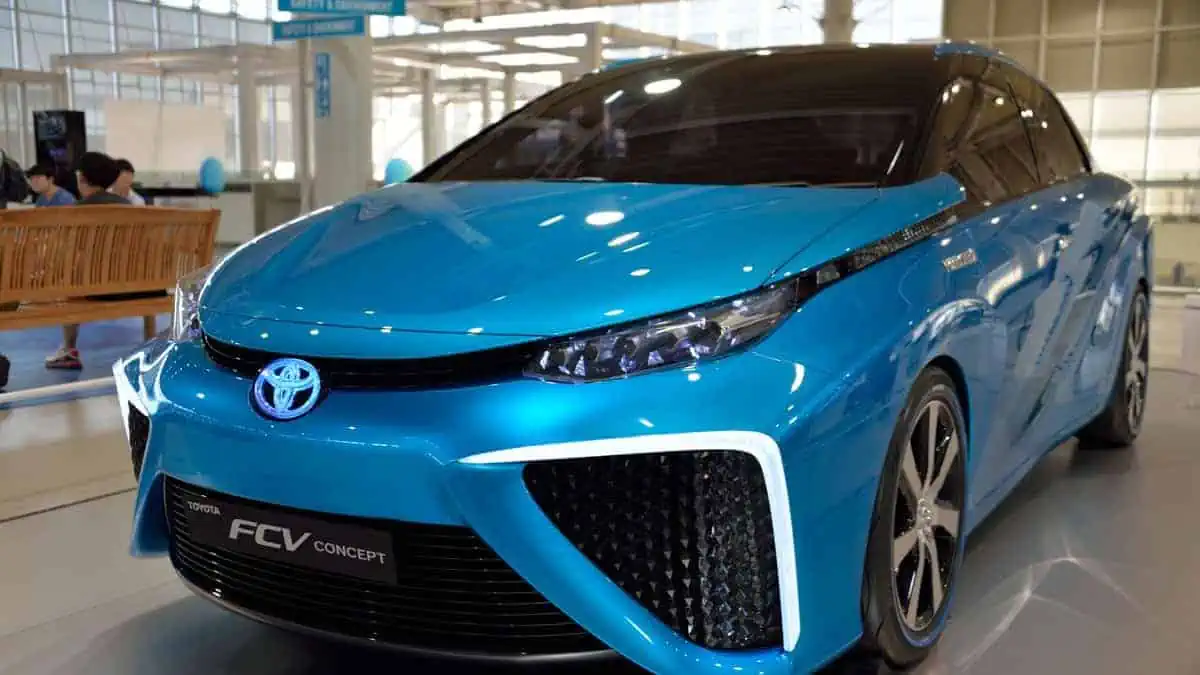The heavy-duty, Class 8 fuel cell electric vehicles (FCEVs) that Toyota Motor and Kenworth Truck Company jointly designed are reported to have been successfully tested. The conclusion of its operations under the Zero- and Near-Zero Emissions Freight Facilities (ZANZEFF) “Shore to Store” project would serve as a potential zero-emissions alternative for diesel-powered vehicles.
Electric Car Reports reported that the project is located in the Inland Empire, the Los Angeles basin, and the Port of Los Angeles. To deliver a sustainable alternative for heavy-duty transportation, Toyota and Kenworth’s cooperation in the project had as its primary objective to almost match the performance of diesel-powered drayage trucks while eradicating emissions.
Notably, a $41 million grant from CARB was used to fund the recently completed “Shore to Store” project, funded under ZANZEFF. Meanwhile, it was proposed with the cooperation of Toyota, Kenworth, and Shell.
The funding came from California Climate Investments, a state program that uses billions in cap-and-trade dollars to reduce greenhouse gas emissions, boost the economy, and enhance environmental and public health.
| “Having a successful demonstration of Toyota’s scaled fuel cell electric power supply with real-world operations for actual customers opens the door to even broader future deployment, as the use of hydrogen helps to eliminate CO2 from heavy-duty transport while offering a cleaner alternative that keeps the vehicles in service, a win for all parties,” said Andrew Lund, Toyota chief engineer, zero emission advanced product planning. “The potential for this technology as a replacement for higher-emission powertrains is real and supports both regulatory and society initiatives to combat climate change while helping us achieve our own goals of carbon neutrality.” “Through the Shore to Store project, we demonstrated how Toyota’s advanced zero-emission hydrogen fuel cell technology could be scaled and used in our Kenworth T680,” said Joe Adams, Kenworth chief engineer. “We clearly showed that hydrogen is a viable clean fuel capable of powering commercial transportation for customers, matching diesel performance in range and power, with quick refueling for minimal downtime and smooth, quiet operation.” |
One of the largest proof-of-concept test cases ever conducted in the real world, “Shore to Store” offered a framework for freight facilities to organize their operations for future product transportation from the “Shore to the Store” throughout the globe.
A 2017 diesel engine running roughly 200 miles per day served as the basis for the Toyota-Kenworth T680 FCEV truck, called “Ocean.” Customers like Toyota Logistics Services, Total Transportation Services, Inc., and Southern Counties Express, among others, drove the 10 “Ocean” trucks used for this project. With the project’s success, the way has been cleared for broader adoption of the technology for additional heavy-duty applications. This includes the rise in the usage of heavy-duty vehicles for commercial transportation.
When fully loaded to its maximum capacity of 82,000 lbs. (GCWR), the T680 FCEV ranges around 300+ miles. In addition, it may operate many shifts for charging a day and travel up to 400 to 500 miles with only a brief 15- to 20-minute fill period between shifts.
The Class 8 T680 FCEVs were manufactured by Kenworth, while the hydrogen-fueled fuel cell electric drivetrain was developed by Toyota. In comparison to standard diesel engines, Ocean trucks lowered greenhouse gases (GHG) by 74.66 metric tons of CO2 per truck year.
In California and abroad, the initiative encourages more research and business potential for hydrogen-powered fuel cell electric mobility. On August 5, 2022, the trucks’ roles in the ZANZEFF “Shore to Store” project will formally end. Nevertheless, some will continue to be used as functioning models or demonstration trucks, including one that will assist Toyota operations in the lower LA Basin.
On the other hand, North America’s busiest container port is the Port of Los Angeles. Although they make up only approximately 3% of all cars in California, medium- and heavy-duty trucks, like those used at the Port, are accountable for around 23% of the state’s greenhouse gas emissions from on-road transportation.
The Clean Truck Fund has been introduced by the Port of Los Angeles to aid in the transition from traditional powertrains to zero-emission ones for its drayage fleets by the year 2035. Remarkably, a demonstration of the fuel cell electric heavy-duty vehicles used in transportation operations was carried out in the port and the surrounding area.
| “Collaborating with original equipment manufacturers like Toyota and Kenworth on this demonstration project is an important step toward bringing next-generation technologies to market,” said Port of Los Angeles Executive Director Gene Seroka. “We’re grateful to CARB for its generous grant to support this effort and look forward to additional zero emission vehicles operating at the Port of Los Angeles.” |
As the first public supplier in California to fuel heavy-duty vehicles, Shell participated in the initiative by constructing a total of three hydrogen stations. The stations were often utilized since the trucks’ drayage operations followed predetermined routes.
| “Shell anticipates a great use-case for hydrogen in Commercial Road Transport here in California and the success of the ZANZEFF project has been an important step in achieving commercialization,” said Wayne Leighty, Shell Hydrogen Mobility, Commercial Head, North America. “Collaborations across both the private and public sectors is key to advancing zero-emissions heavy-duty mobility, and we are grateful to CARB, Port of Los Angeles, and ZANZEFF members for their support.” |
Notably, Toyota Motor Manufacturing Kentucky will start producing fuel-cell powertrain modules in 2023.






